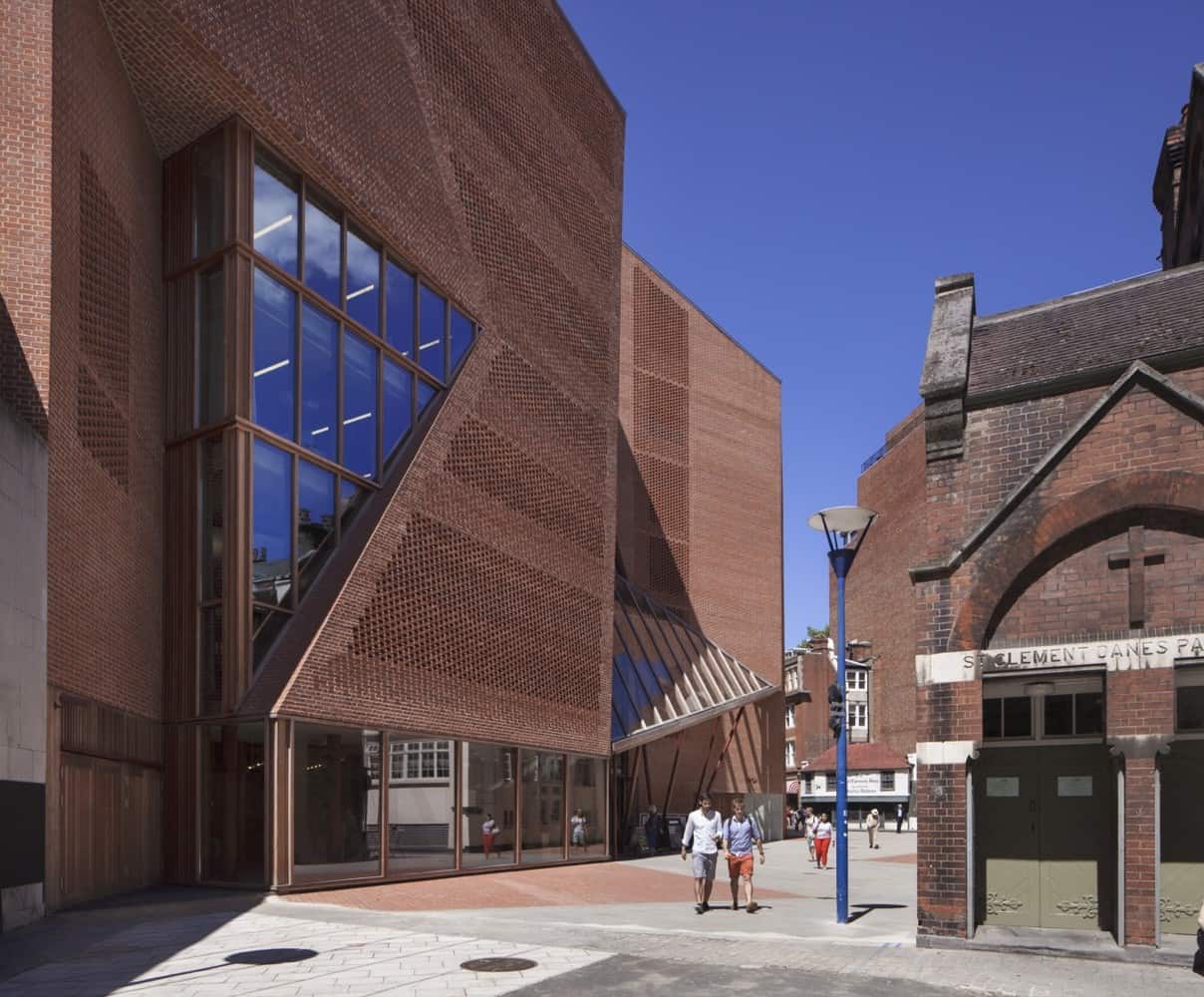Architects are some of the most critical professionals in our modern world. Without architects, there wouldn't be the beautiful buildings you see today. In our article on how to become an architect, we'll share with you everything you need to know about this great profession.
By the end of it, you'll have more than enough information to get started on this journey. You'll learn about the National Architectural Accrediting Board, Architectural Registration Boards, what a licensed architect does, the types of architects, and much more.
What Does An Architect Do?
A licensed architect is a professional in the construction industry responsible for creating innovative designs and bringing them to life. Licensed architects are responsible for most of the iconic structures you see today.
In addition to creating designs that look amazing, licensed architects also ensure that these structures are safe to live in and are functional. To become a competent architect, you'll need to familiarize yourself with architectural history, get a bachelor's degree, pass the Architect Registration Examination, join an Intern Development Program, and finally work in one of the fantastic Architectural and Engineering companies we have today.
You'll need to understand how building systems, structural systems, and other construction systems work. Then, once you're done with your bachelor's degree, you'll be able to understand what happens on a construction site, how building materials work, and everything else about construction projects.
What Are Some Duties of A Licensed Architect?
- Designing architectural plans of buildings
- Understanding client's needs and bringing them to life
- Overseeing architectural projects
- Understanding and incorporating building codes, zoning laws, city ordinances, and other regulations during the design process
- Creating project blueprints
- Undertaking cost analysis, feasibility studies, environmental impact assessments, and more
- Coordinating with other construction professionals on projects
- Using advanced design software to create unique designs
What Are the Steps to Becoming An Architect?
1. Fulfill the Educational Requirements
To become a practicing architect, you'll need to have a first professional degree in architecture. The institution should also be accredited by the National Architectural Accrediting Board (NAAB) for your first professional degree to be valid.
In addition to choosing a school accredited by the National Architectural Accrediting Board (NAAB), you will also need to pass exams by the Architectural Registration Boards.
The three professional degrees you can get in architecture programs include the following.
- Bachelor of Architecture (BArch) degree requires at least 150 credit hours in the selected professional studies.
- Master of Architecture (MArch), which requires at least 168 credit hours. 30 of these credit hours should be of the graduate level.
- Doctor of Architecture (DArch) requires 120 undergraduate credit hours and at least 90 graduate credit hours.
2. Join An Internship Program
In addition to getting the necessary knowledge and knowing how to use computer-aided design software, you'll need some practical experience. All states often require their architects to join an internship program to improve their skills.
This architectural experience program will give you valuable experience that you'll use once you get out into the field. Several states often provide graduates with these opportunities through the Intern Development Program. This program is offered by the American Institute of Architects and the National Council of Architectural Registration Boards.
By the time you're done with this internship program, you'll have completed 5,600 hours of work experience.
3. Get Licensed
The next step to becoming a successful architect is getting licensed by the state. You'll need to pass the Architect Registration Examination to do that. This is often a seven-part exam that you can either pass or fail.
4. Apply for A Job
Once you are a licensed architect, you can now start working and practicing what you learned. You can choose to work in private practice or join a top-tier architecture firm. Your architecture license will open doors for you and allow you to earn a living.
You can also look for teaching positions if you want to go down that route.
5. Get Professional Certificates
If you want to climb up the professional ladder quickly, you'll need to earn more professional certificates. The National Council of Architectural Registration Boards offer these certificates and make it easier for you to apply for more jobs.
If you want to move to another state or take clients from other states, these certificates will come in very handy. In addition, you can use these certificates to show your expertise and competence in the field.
6. Further Your Studies
After you learn how to become an architect through getting a bachelor's degree and learning about building codes and more, you may want to get further education. This means applying for a master's degree or getting another degree in a related field.
Getting further education can help you improve your skills and open more doors.
What Crucial Skills Do You Need to Become A Competent Architect?
Architecture is so much more than earning a bachelor's degree or master's degree in the field. Successfully finishing the architecture program is just half the battle. In addition to learning how to become an architect in school, you need some essential skills to help you succeed in the field.
Here are some hard skills and soft skills that architecture students need to have as they become architecture graduates and go out into the field.
1. Leadership Skills
In most construction projects, the architect is often the one who leads the entire process and team. Therefore, besides having a bachelor's degree and master's degree, a good architect must know how to lead. Practice management involves coordinating everyone on the team and ensuring that everyone understands their role and works towards the project's success.
As you learn how to become an architect, you also learn how to manage teams and people. You'll need to coordinate between the different professionals on the team and the clients.
2. Engineering and Math Skills
Whether you are using computer-aided design or any other software, you'll need to understand the engineering effects of your design. Once you pass your Architect Registration Examination, you will be designing aesthetically pleasing and functional buildings.
You will incorporate engineering principles in your design to ensure that your buildings are functional. Your construction drawings should be able to work well with the structural engineer's drawings.
3. Visionary Skills
As a practicing architect in an architectural firm, you'll need to design buildings that fit the present and future needs. This means that you must learn how to look beyond what is happening now.
You'll need to anticipate the needs of future generations while still making the buildings functional for the present. This also means that you'll need to stay in touch with what's happening in the world. Aspiring architects must incorporate construction methods that are good for the future.
4. Communication Skills
Architects spend a lot of time designing to meet the clients' needs and ensuring that construction projects run smoothly. To do that with ease, you'll need to communicate well with the client and other professionals in the team.
You may have to interpret the construction documents for your clients and ensure that building contractors and other parties follow site planning and other concepts. Organizational skills and visualization skills are also essential to have.
What Are the Different Types of Architects?
As you learn how to become an architect, you must also decide what type of architect you want to become. This will allow you to choose the right degree program for you. You'll be able to get a degree in architecture that suits what you want to do.
Here are some common types of architects.
1. Design Architect
A professional degree in design architecture allows you to design the overall design of a structure. Some of the roles of this architect are to create an outline of the proposed structure, create blueprints, revise the designs as needed, bring clients' visions into life, and much more.
As a design architect, you'll also need to choose the construction materials needed for the project. You may also need to learn some project management in addition to getting this professional degree. This is because the architect jobs that come with this role will require you to manage other professionals in the team.
Once you know how the construction contracts are in order, you'll be able to move forward well. You can also choose to get a master's degree to get more knowledge. There are several master's degree programs that you can check out once you're done with your graduate degree.
2. Technical Architect
As a technical architect, you'll primarily deal with the technical parts of the structure you're designing. Some technical aspects include water tightness, thermal efficiency, and other functional features. In addition, you'll need to familiarize yourself with the construction regulations in the area.
You can check in with the National Council in your area to get more details you need. You'll create technical drawings using the technical skills you have for building design.
3. Site Architect
The site architect oversees the activities on the construction site. If you choose to become a site architect, you'll coordinate between the workers and other professionals. You'll need to incorporate environmental planning, architecture design, leadership, and other organizational skills.
You will also ensure that the desired quality of the project is maintained. Other duties will include ensuring safety on-site and adherence with the construction contracts.
4. Planning Architect
A planning architect ensures that the project is in line with the local regulations. In addition, this architect is often brought on board to advise the team on all local and national requirements that the project should adhere to.
They can also submit the project plans for approval by the local authority or regional authority.
Final Thoughts
We hope that this guide has given you sufficient information on how to become an architect. Let us know which type of architect you'd like to become and which skills you think you may need.
















